Le Scalze – Chiesa di San Giuseppe a Pontecorvo
Text by Andrea Viliani
23.04 – 20.05 2016
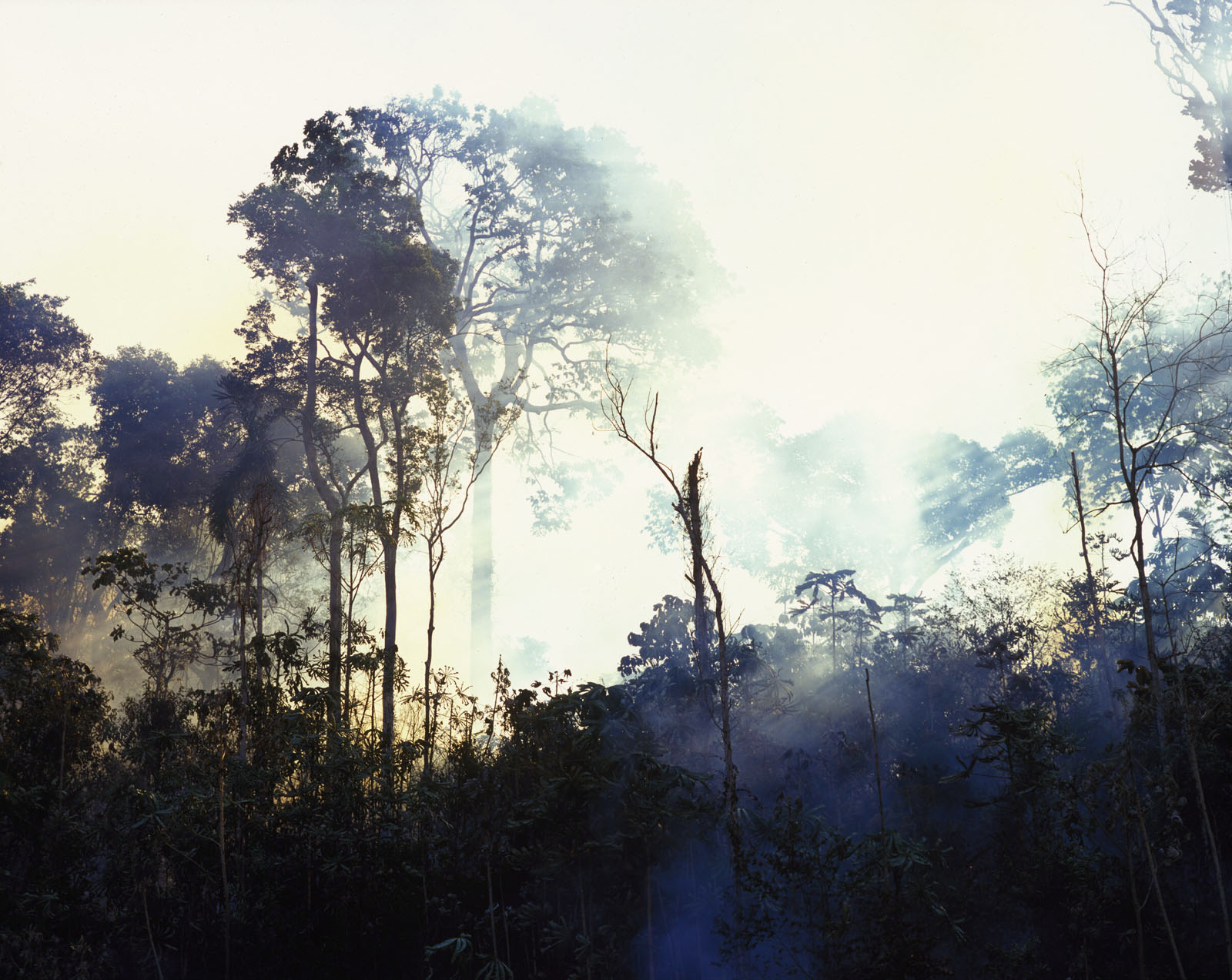
FRAMMENTI DI PARADISO
Text by Andrea Viliani
Fragments of Paradise is the third exhibition—after Rising in 2011 and Dio c’è [There Is God] in 2014—that the Agovino Collection sets up, together with the Matronato [Matronage] of the Fondazione Donnaregina for the contemporary arts, to express its in-progress delivery and nature.
An exhibition in real-time—compared to the in-progress identity of the collection, caught in the chronicle of its own making—but at the same time transcendent as regards its current occurrence—as it aims to stop the flowing of time, with its unstoppable chronicle nature, to support a typical Neapolitan inclination to asceticism and ecstasy.
This exhibition could be, in itself, the equivalent of a contr’ora, a Neapolitan expression which defines, with a marvelous terminological and conceptual synthesis, that moment of early afternoon quietness, a slowing down of time that seems to work against itself, against its destiny of linear progression: suspended between afflatus and enjoyment, during the contr’ora one has the illusion of temporarily stopping time, sharpening the perception of ourselves and the world around us in a meditative stillness which is imagined but nevertheless, for this very reason, even more delicate, rare and welcome. A moment of unstable eternity that contains in itself past, present and future, negotium and otium, stories and History, individual and collective, good and evil, heaven and hell, damnation and redemption…
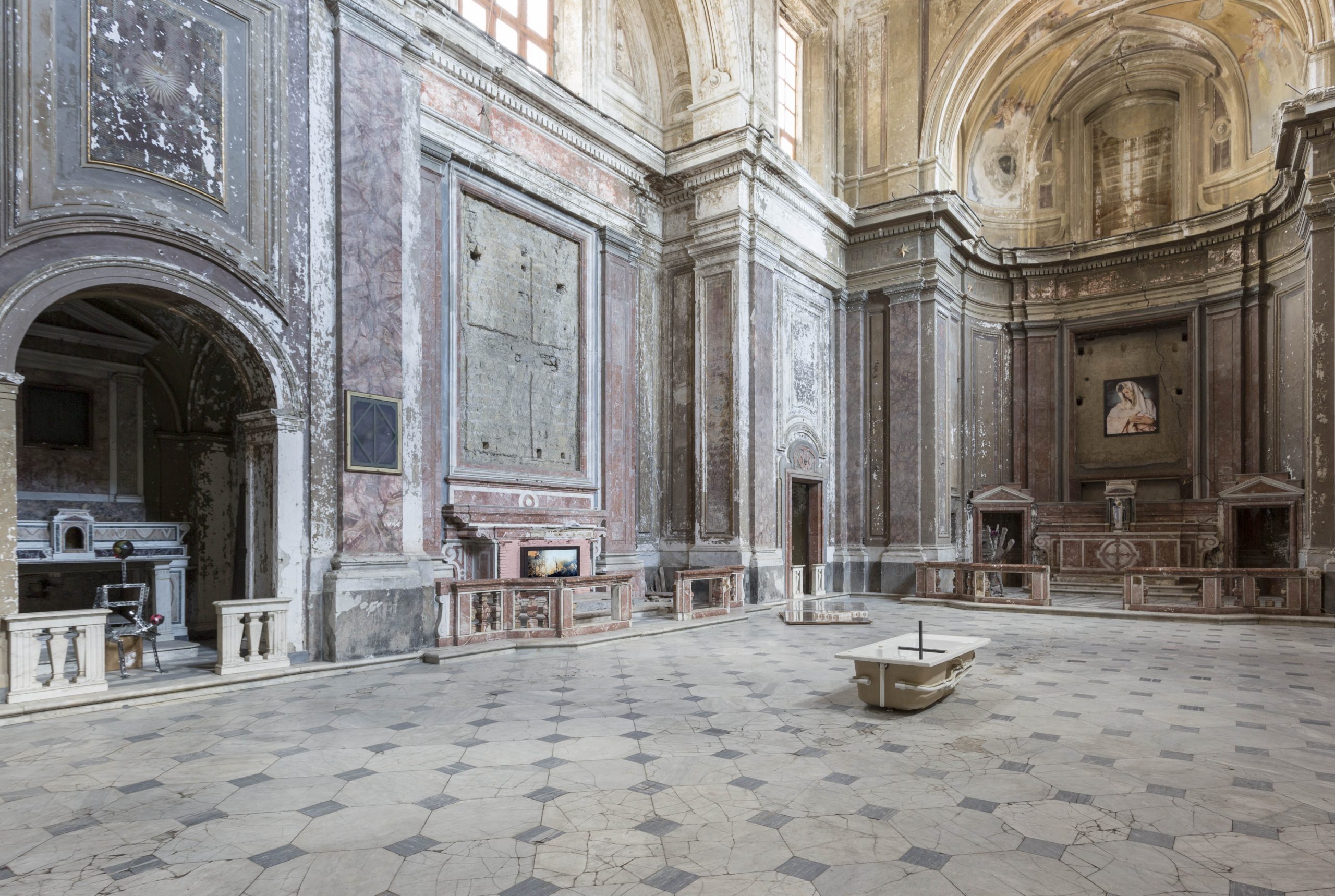
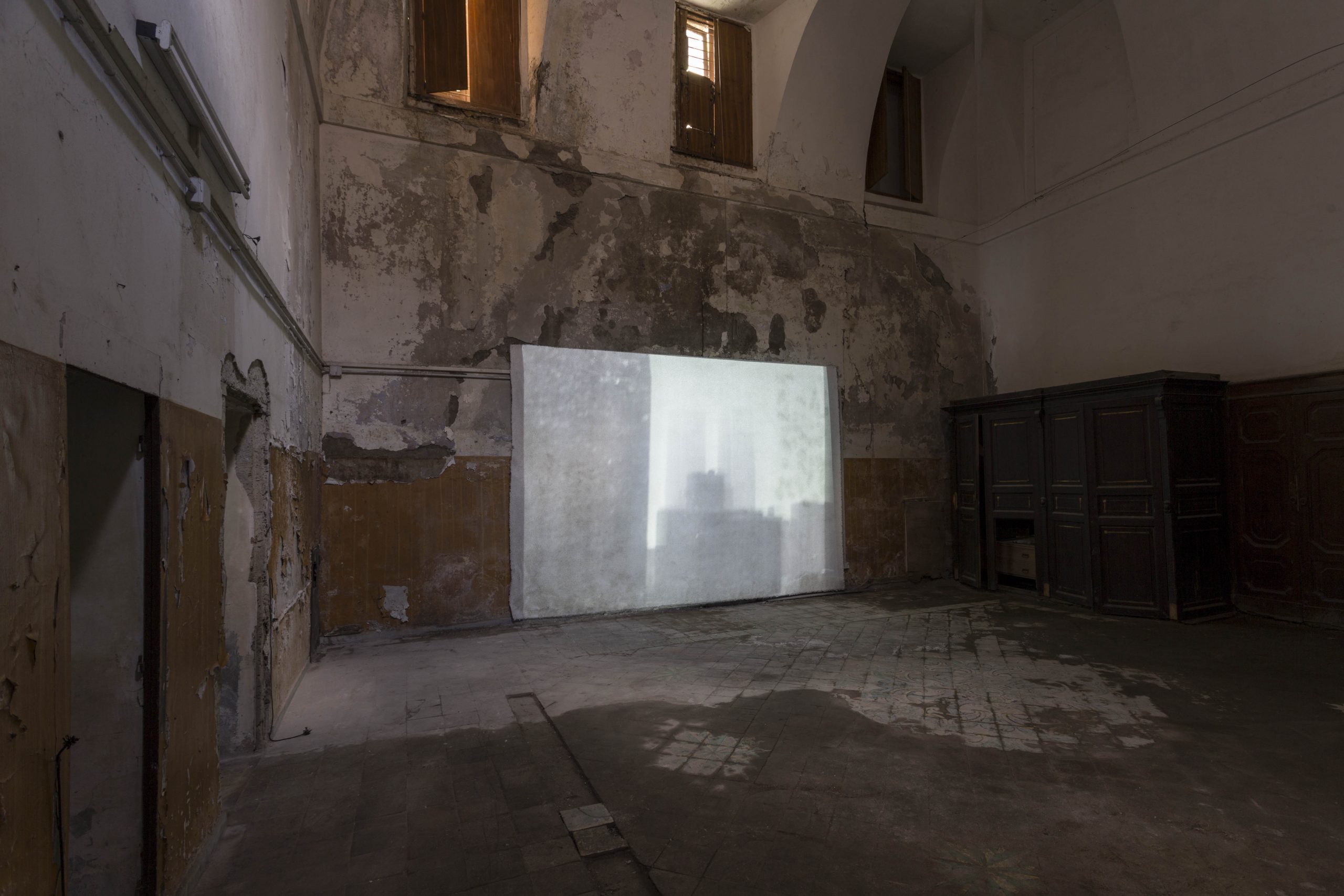
The very location of the exhibition—the first in a public space, within the in- progress traits of the exhibition triptych by the Agovino Collection—seems to demonstrate this intimate and pervasive dynamic: in the premises of the seventeenth-century monumental complex of the Church of San Giuseppe in Pontecorvo, in the Avvocata district in Naples, the exhibition conjures a constant tension between opposites, religious and secular, chronicle and eternity, motion and stillness.
Behind the monumental Baroque façade and the impression of abandonment typical of many churches in this city—abounding with history and evidence of
the contradictory civilizations on which it was built, destroyed and rebuilt—a staircase opens up that looks like a “stairway to Heaven,” climbing which we are welcomed by the large, empty spaces of the church designed by the prince of architects of Neapolitan baroque, Cosimo Fanzago. In this otherly space-time, the church unfolds asserting itself over the imperfection of the world, which starts with the noise of the surrounding neighborhood, the rhetorical power of silence: a silent invitation to prayer and a reminder for human corruption to ponder over its irrelevance in front of the divine teaching and its different magnificence, coherence, completeness and truth.
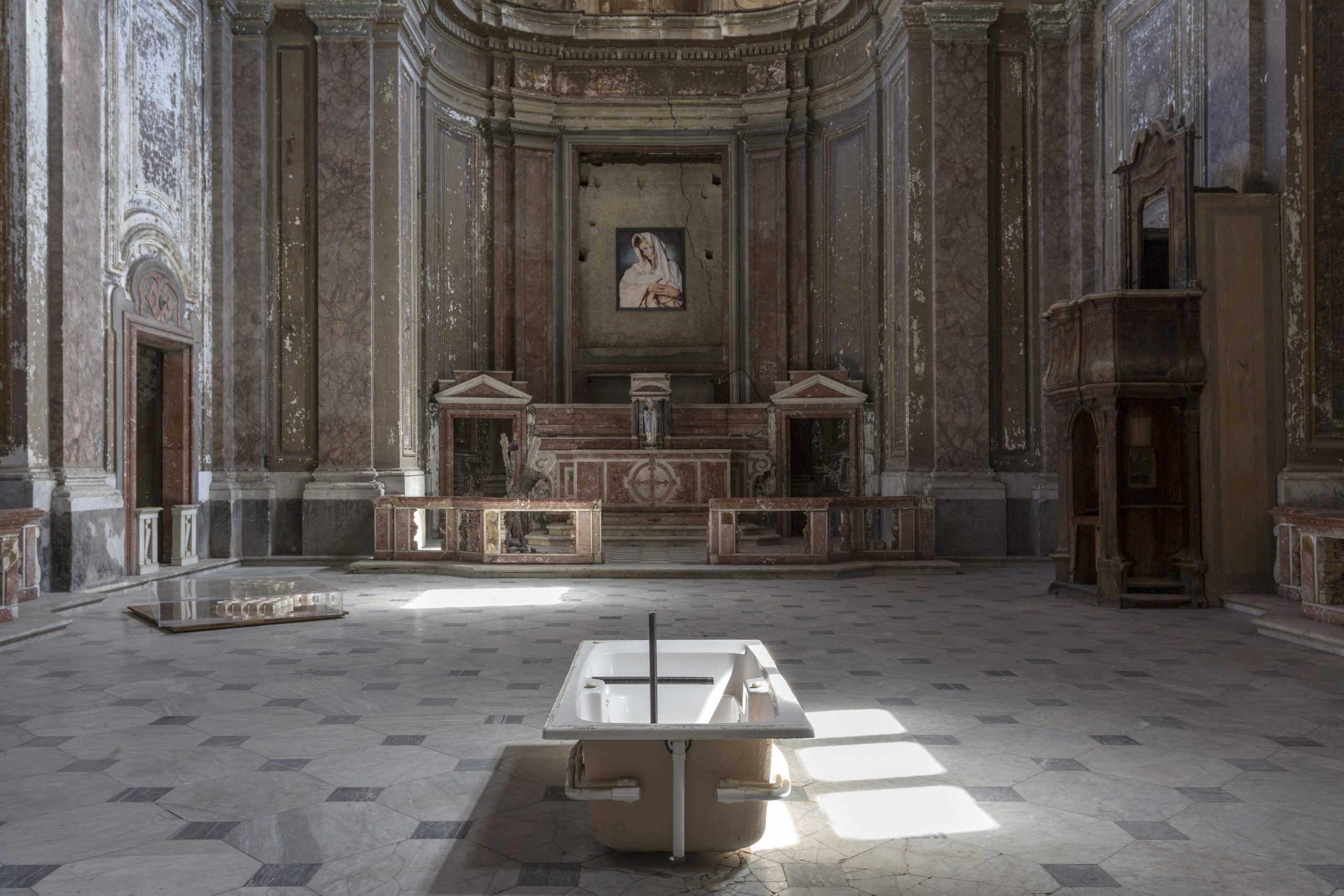
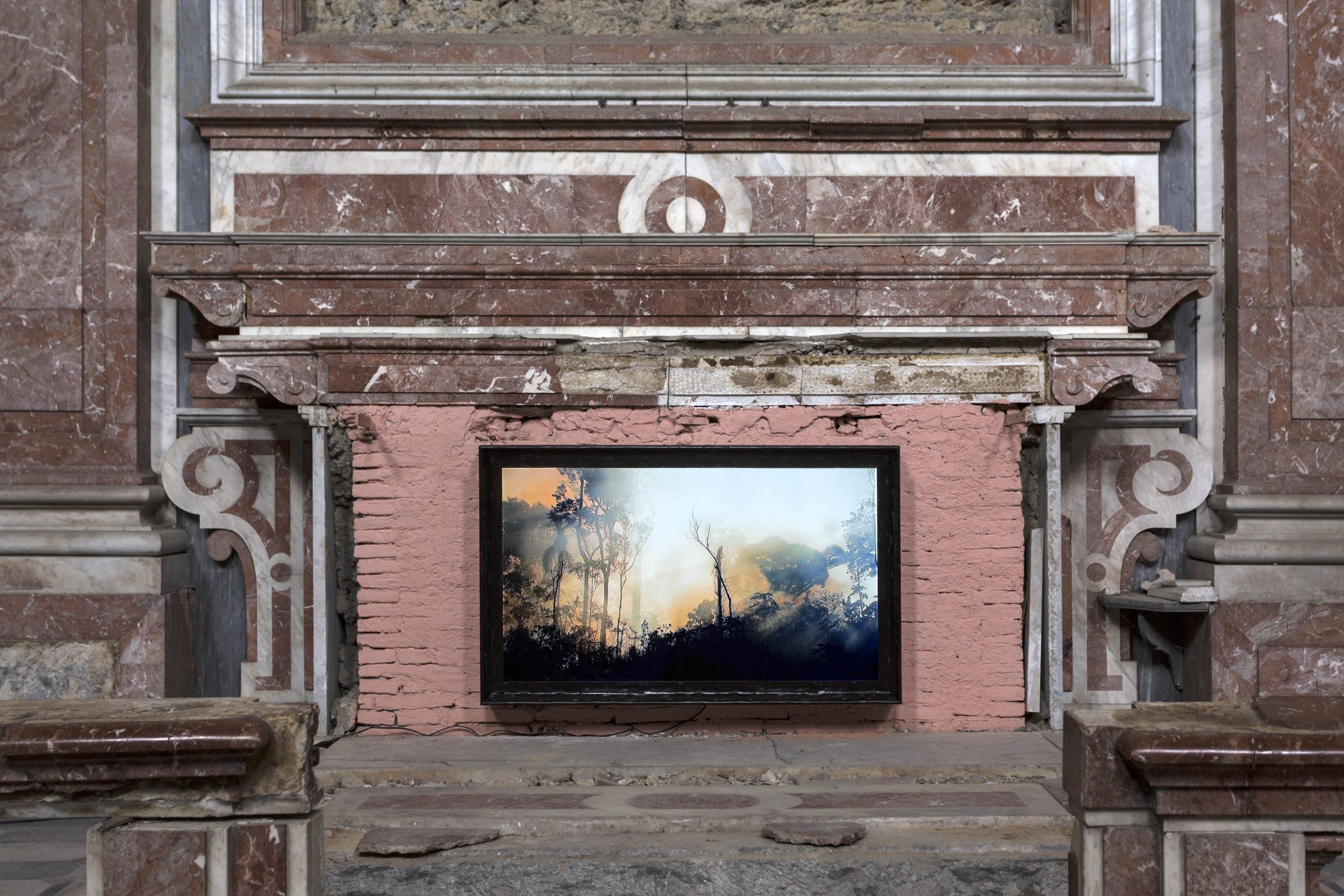
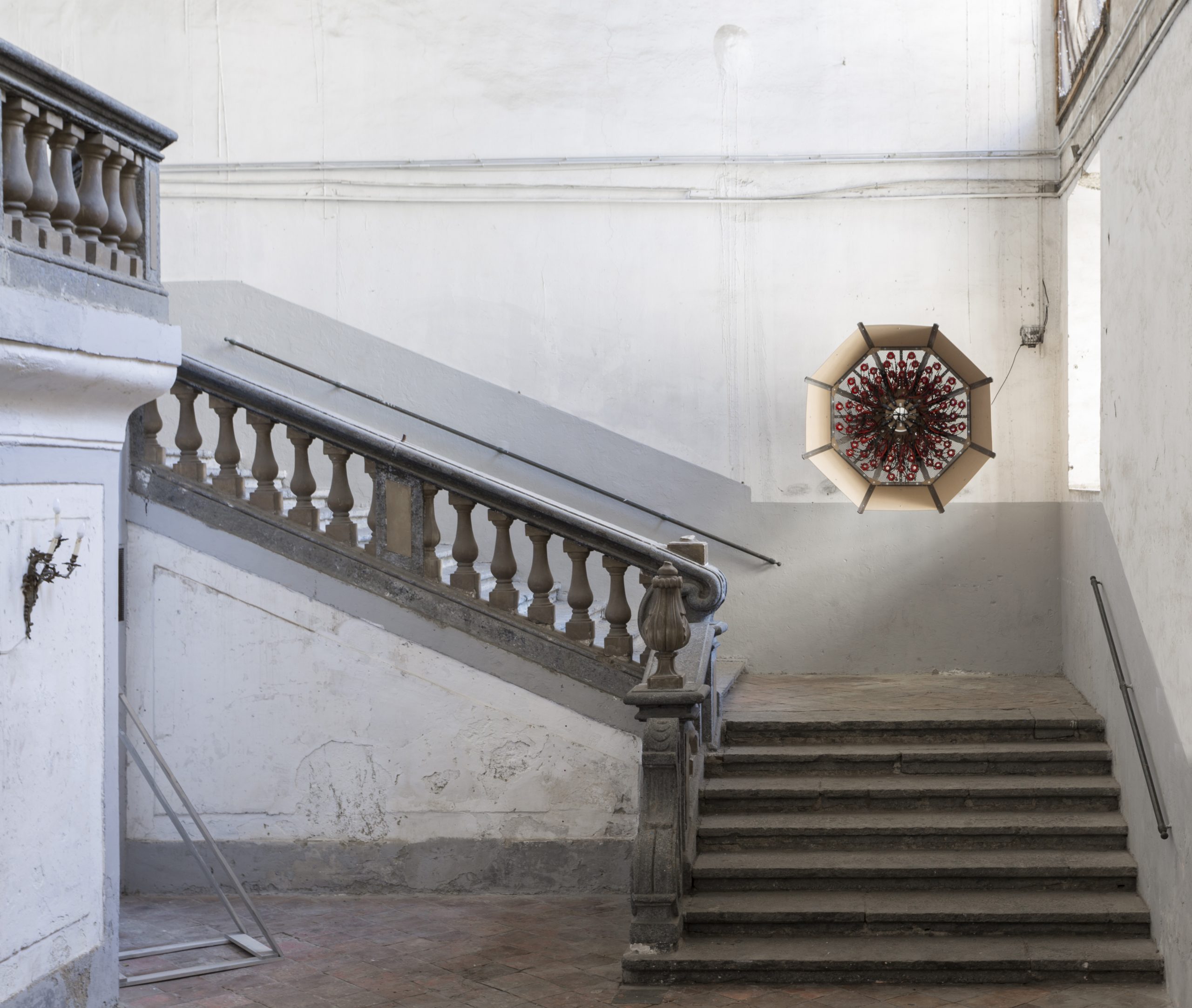
A minimalistic mapping that at every step traces the coordinates of an adventurous discovery, the exhibition is configured as the incident, the relative occurrence
in a space-time of the absolute fluctuating between human and divine, shadow and light, invisibility and detection, doubt and understanding. In this context, contemporary works are disseminated along an indistinct path, free to the will of each visitor, in a waning and resurgent exploration within the folds of the building, in which the presence of the artists takes place between the foreground and
the background, scene and counter-scene, supporting structure and decoration detail. Each piece acts as a respectful but pressing mise en abyme that gives back, amplifying it, the very partiality of this as of any collection, of this as of any exhibition, of these as of any works of art—always parts of a whole, empirical indications of absolute and transcendence, attempts to relate with the other-than- self, in their own way different and multiple fragments of paradise on earth…
And, for those of us who have faith in art, the names of these fragments—in their fleeting and radical sequence of sounds, colors, images, emotions, senses and meanings—seem to correspond to those we whisper at each step, during our visit-prayer-premonition-memory… Giorgio Andreotta Calò, Francesco Arena, Lutz Bacher, Luca Bertolo, Ethan Cook, Michael Dean, Luca De Leva, Lorenzo Scotto Di Luzio, Fabian Henrkenhoener, Merlin James, Esther Kläs, Runo Lagomarsino, David Maljković, Damir Očko, Pietro Roccasalva, Andres Serrano, Kiki Smith, Michael E. Smith, Martin Soto Climent, Alberto Tadiello, Josh Tonsfeldt, Sergio Vega…
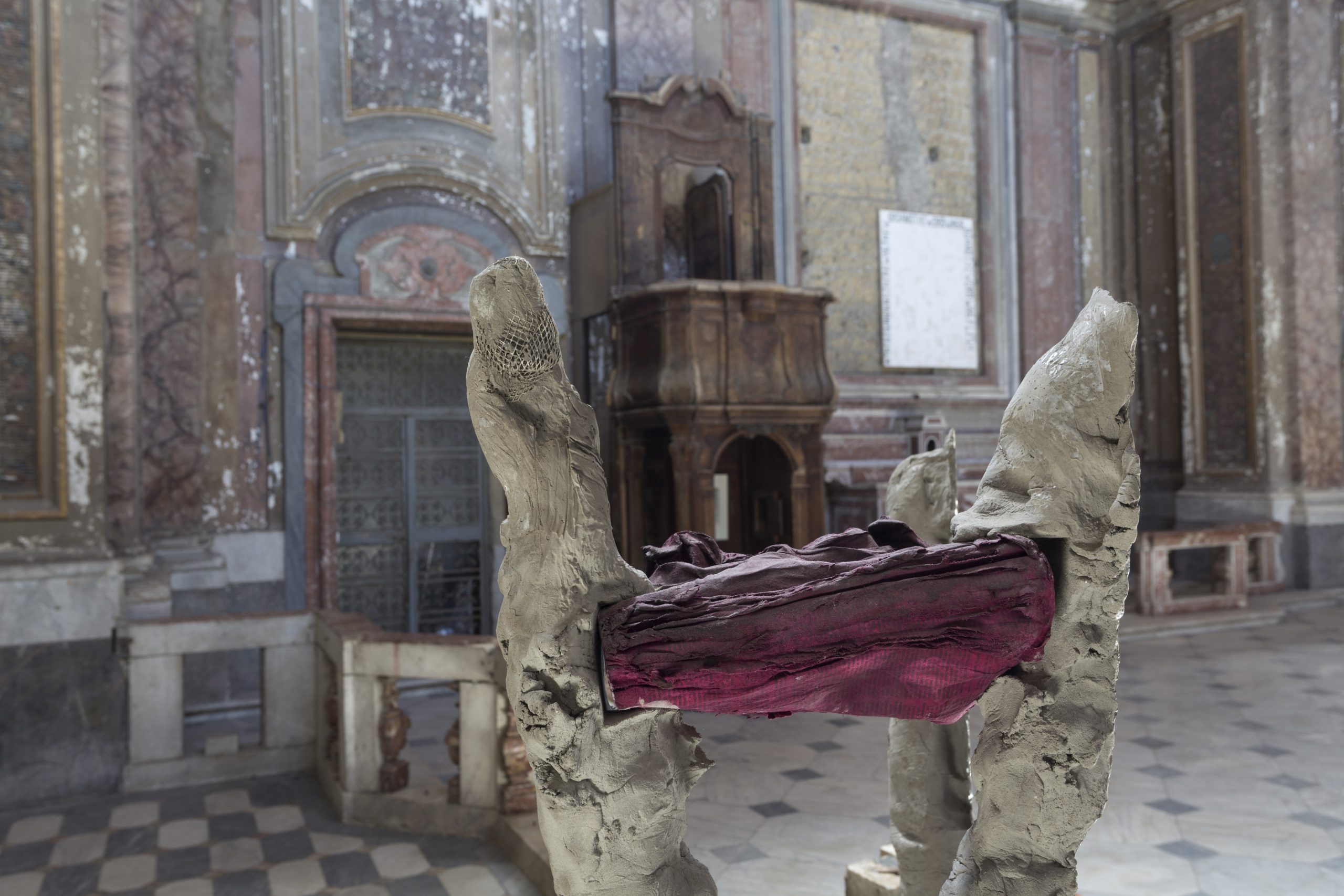
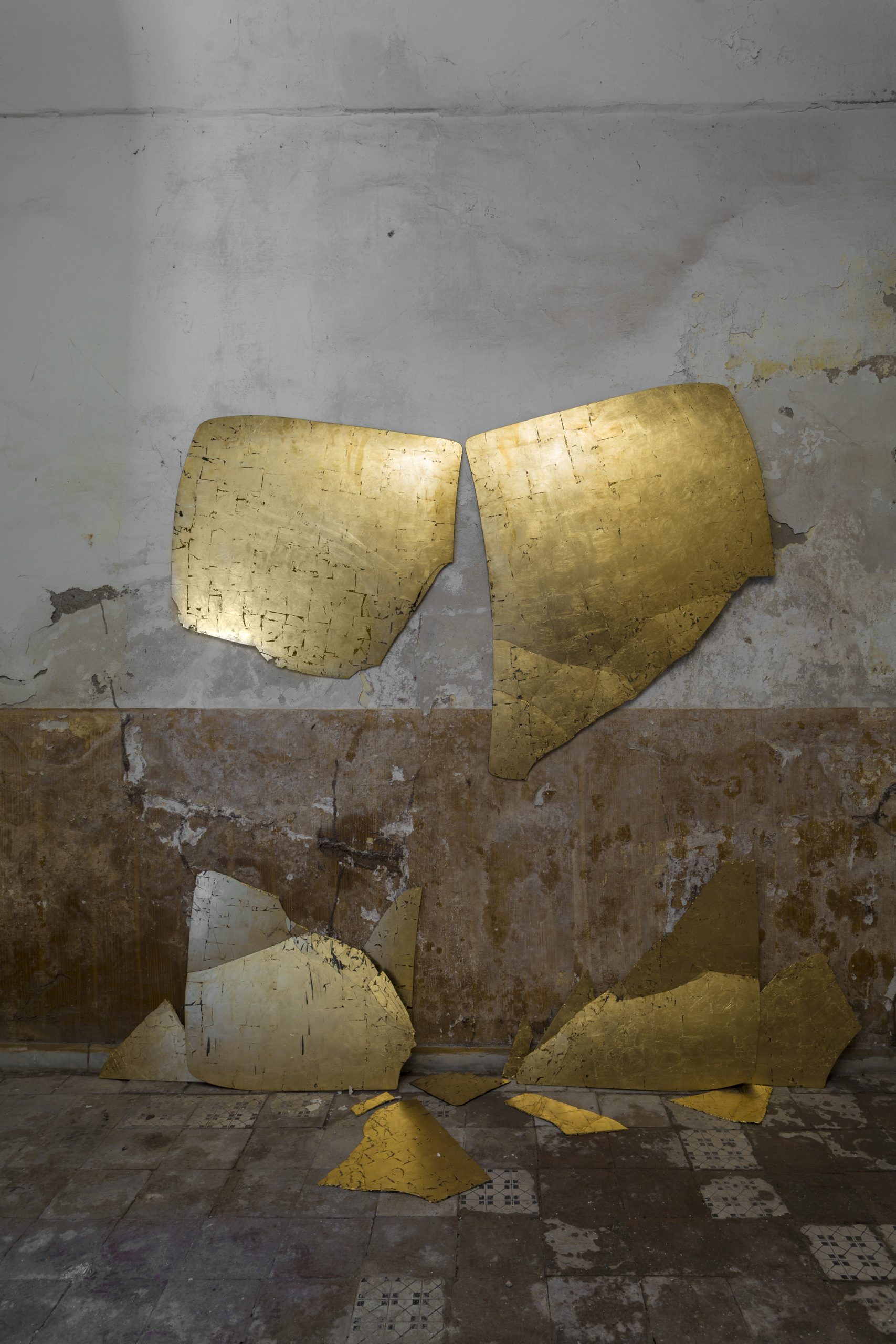
AN ENTHUSIASTIC JOURNEY
Text by Fabio Agovino
The word ‘enthusiasm’ comes from the Greek enthousiasmós and literally means “in god,” from en, ‘in’, and theós, ‘god’. Introduced for the first time by Plato, the term indicated a state of exaltation such as to make one lose control of one’s conscience, a kind of inner fury triggered by the invasion of a mysterious divine force. To me, art represents exactly this fury, an intense and irrational feeling that tries to overcome the senselessness of reality.
I decided to dedicate part of my life to search, with passion and attention, works of art to include in a collection, preserving them from the fate of locked up objects and taking them along an open journey aimed at interpreting the world and communicating the intuitions which they keep expressing.
For me, collecting is a liberating act—I would dare to say revolutionary. Like illuminations in our present, the artworks come together in a constantly
changing fashion, in which the becoming itself is the key to reading the secret correspondences that inhabit the everyday, its events, its objects and its spaces. Whenever I set up an exhibition, I find new meanings and visions for works that I thought I had defined and enclosed around a single meaning, and which instead reveal geometries of relationships and exchange that lead me towards a continuous re-examination of interiority.
The first time I entered the Church of the Scalze, I had the impression that time had stopped, that it kept withdrawing as I progressed towards the altar; and so I decided to recount my collection with an exhibition that had as its location in that very place—which by its nature addresses the deepest intimacy—trying to create an ascensional path in which hell and heaven, evil and good, pulled their veil off.
Tales of lost paradises, of mythological and distant natures, of hidden othernesses, of unspeakable suffering and of possibilities of redemption and relief, Frammenti di Paradiso [Fragments of Paradise] is a journey in search of the meaning of life, but above all a hymn to the saving power of art.
Artists:
Giorgio Andreotta Calò, Francesco Arena, Lutz Bacher, Luca Bertolo, Ethan Cook, Michael Dean, Luca De Leva, Lorenzo Scotto Di Luzio, Fabian Henrkenhoener, Merlin James, Esther Kläs, Runo Lagomarsino, David Maljković, Damir Očko, Pietro Roccasalva, Andres Serrano, Kiki Smith, Michael E. Smith, Martin Soto Climent, Alberto Tadiello, Josh Tonsfeldt, Sergio Vega.
Photos credits: Maurizio Esposito
The exhibition received the matronage of Donnaregina Foundation for contemporary art / MADRE Museum in Naples.